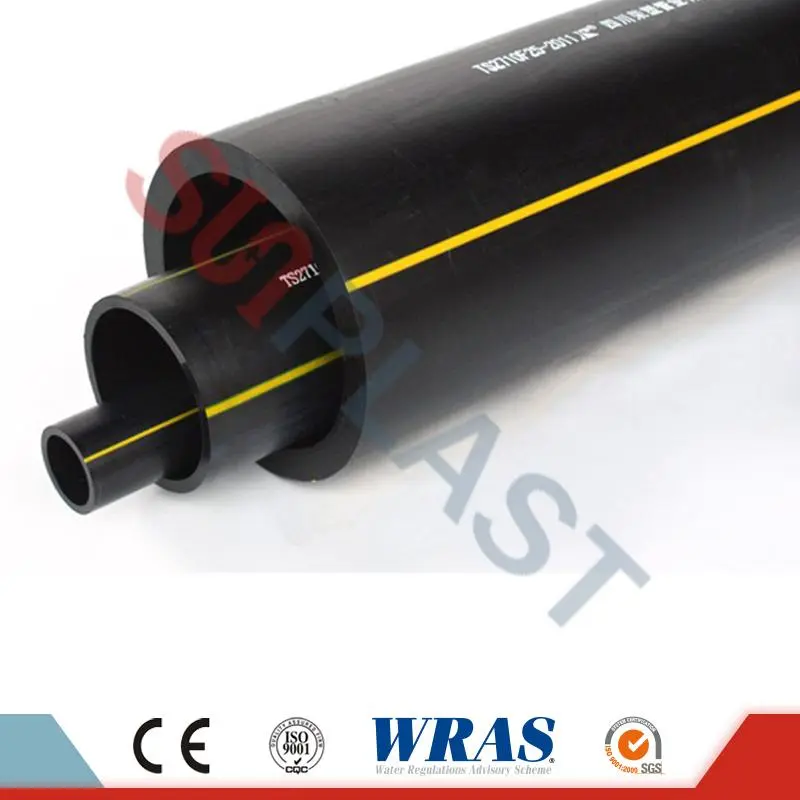Understanding the Benefits of HDPE Gas Pipes in Modern Infrastructure
2024-08-22
Understanding the Benefits of HDPE Gas Pipes in Modern Infrastructure
The use of High-Density Polyethylene (HDPE) gas pipes has revolutionized the gas distribution industry, providing a durable, efficient, and cost-effective solution for transporting natural gas and other gaseous fuels. In this blog, we will explore the key benefits of HDPE gas pipes and why they have become the preferred choice for gas distribution systems worldwide.

What is HDPE?
High-Density Polyethylene (HDPE) is a type of thermoplastic polymer made from petroleum. Known for its high strength-to-density ratio, HDPE is lightweight, yet incredibly strong and resilient. This makes it an ideal material for a wide range of applications, including gas pipes.
Key Benefits of HDPE Gas Pipes
1. Corrosion Resistance
One of the most significant advantages of HDPE gas pipes is their resistance to corrosion. Unlike traditional metal pipes, which can rust and corrode over time, HDPE pipes are immune to the effects of moisture, chemicals, and other environmental factors. This ensures a longer lifespan and reduces the need for costly repairs and replacements.
2. Flexibility and Durability
HDPE gas pipes are highly flexible, allowing them to withstand ground movements, seismic activities, and temperature fluctuations without cracking or breaking. This flexibility also makes them easier to install in challenging terrains, reducing the risk of damage during installation and extending the service life of the pipeline.
3. Leak-Free Joints
HDPE gas pipes are typically joined using heat fusion, a process that creates a seamless, leak-free connection. This method is more reliable than traditional jointing methods used with metal or PVC pipes, as it eliminates the risk of leaks caused by joint failures. The result is a more secure and efficient gas distribution system.
4. Lightweight and Easy to Handle
Despite their strength, HDPE gas pipes are lightweight, making them easier to transport, handle, and install. This reduces labor costs and installation time, making HDPE a more cost-effective option for large-scale gas distribution projects.
5. Cost-Effectiveness
The combination of durability, flexibility, and ease of installation makes HDPE gas pipes a cost-effective solution. Their long lifespan and low maintenance requirements further contribute to reduced overall lifecycle costs, making them a smart investment for gas distribution networks.
6. Environmental Sustainability
HDPE is a recyclable material, contributing to environmental sustainability efforts. Additionally, the production of HDPE pipes has a lower carbon footprint compared to traditional materials like steel or copper. By choosing HDPE gas pipes, companies can reduce their environmental impact and support sustainable practices in infrastructure development.
Applications of HDPE Gas Pipes
HDPE gas pipes are used in a variety of applications, including:
- Natural Gas Distribution: HDPE pipes are widely used for the safe and efficient distribution of natural gas in urban and rural areas.
- LPG (Liquefied Petroleum Gas) Systems: HDPE pipes are also suitable for transporting LPG in both residential and commercial settings.
- Industrial Gas Systems: In industries that require the use of gaseous fuels, HDPE pipes provide a reliable and durable solution for gas transport.
- Landfill Gas Recovery: HDPE pipes are commonly used in landfill gas recovery systems, where they help capture and transport methane gas generated by decomposing waste.
Conclusion
HDPE gas pipes offer a range of benefits that make them an ideal choice for modern gas distribution systems. Their resistance to corrosion, flexibility, leak-free joints, and cost-effectiveness make them a reliable and sustainable solution for transporting natural gas and other gaseous fuels. As infrastructure continues to evolve, the use of HDPE gas pipes will undoubtedly play a crucial role in ensuring safe, efficient, and environmentally friendly gas distribution.


